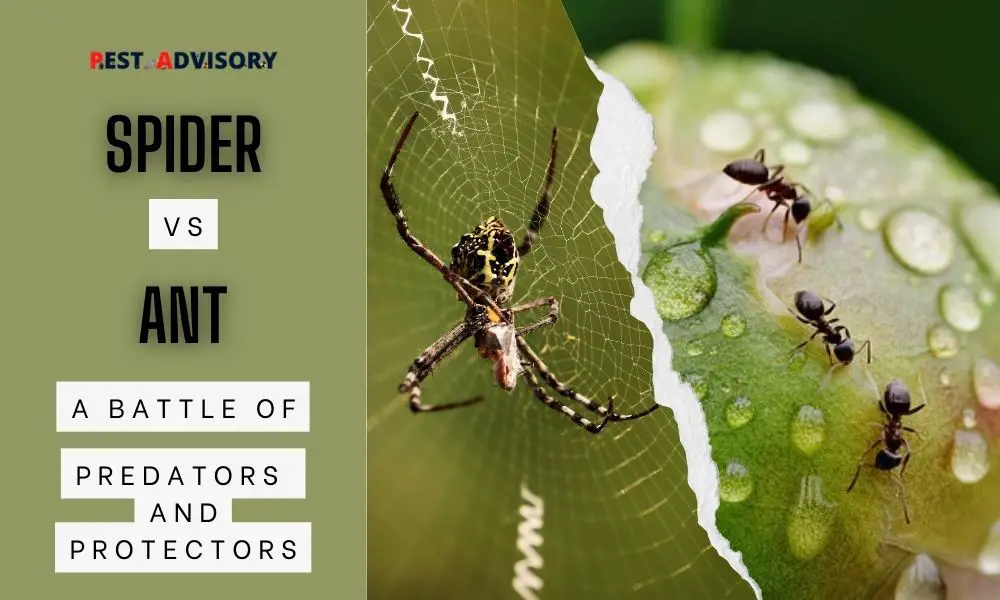In the hidden realms of the insect world, an epic battle unfolds between two extraordinary creatures: the spider and the ant.
These miniature powerhouses engage in a constant struggle, embodying the opposing roles of predator and protector.
With their intricate strategies and remarkable adaptations, the spider and ant showcase a captivating clash of survival instincts.
Important Note: If you're tired of pests and want a reliable solution, then you should definitely consider seeking help from a professional pest control company. DIY solutions can be effective, but if you're dealing with a significant pest infestation, you don't want to rely solely on DIY methods. Pest control companies typically don't charge huge fees. You can fill out this form to receive free quotes from the top local pest control companies, and compare the quotes and see for yourself. Then, finally, your pest problems will be eliminated for good.
Join us as we delve into the intricate world of this ongoing duel spider and ant, where the line between predator and protector becomes blurred.
Physical Characteristics: Spider
Spiders are arachnids and belong to the class Arachnida. They have distinct physical characteristics that set them apart from other creatures:
Body Structure
Spiders have two main body parts, the cephalothorax (which combines the head and thorax) and the abdomen. They are known for their segmented bodies and possess an exoskeleton, providing support and protection.
Eight Legs
Spiders have eight legs attached to their cephalothorax. These legs are equipped with specialized sensory organs, called setae, that help them detect vibrations and navigate their surroundings.
Multiple Eyes
Most spiders have multiple eyes, typically eight, arranged in various patterns on their cephalothorax. The number and arrangement of eyes vary across different spider species, influencing their visual perception.
Web-Spinning Abilities
One of the most remarkable traits of spiders is their ability to spin silk webs. They produce silk from specialized structures called spinnerets, located at the posterior end of their abdomen. Spiders use their silk to construct intricate webs for trapping prey or as shelters.
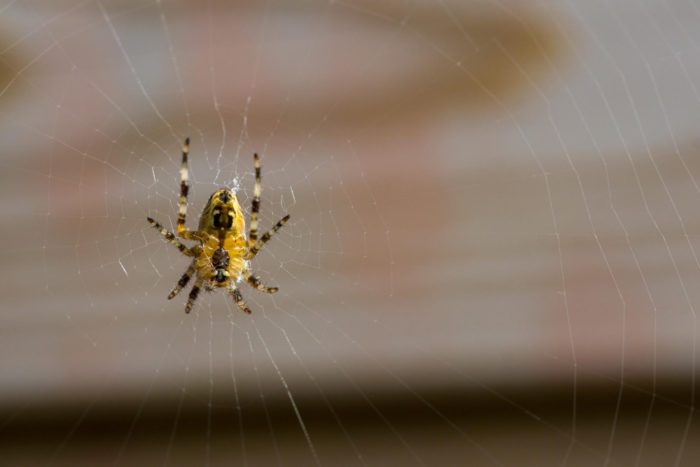
Physical Characteristics: Ant
Ants are social insects that belong to the family Formicidae. They exhibit distinct physical characteristics that contribute to their success as a highly organized society:
Body Structure
Ants, like other insects, have three main body parts: the head, thorax, and abdomen. Their bodies are divided into segments, giving them flexibility and mobility.
Six Legs
Ants possess six legs, each equipped with specialized structures that aid in movement, communication, and carrying out various tasks within the colony.
Compound Eyes
Ants have compound eyes, which consist of multiple individual lenses. These eyes provide a wide field of vision and allow ants to detect movements, perceive light intensity, and recognize shapes.
Communication through Pheromones
Ants communicate primarily through the use of chemical signals called pheromones. They release specific pheromones to mark trails, signal danger, or indicate food sources, enabling effective coordination within their colonies.
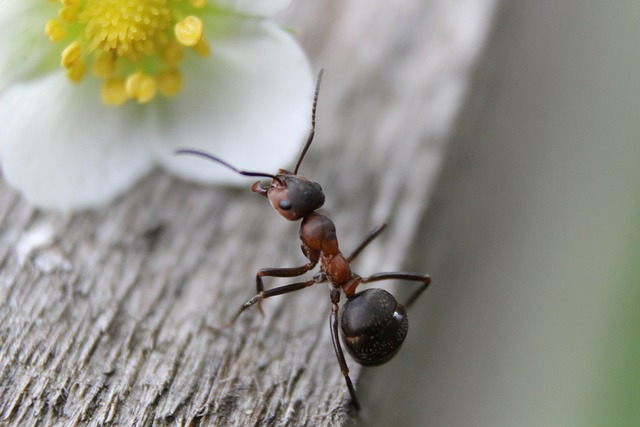
Behavior and Lifestyle: Spider
Spiders exhibit fascinating behavior and lifestyles that vary across different species. Here are some key aspects of spider behavior
Diverse Species
There are thousands of spider species, each with its own unique behavior patterns. Some spiders are solitary, while others live in colonies or exhibit communal behavior.
Hunting Methods
Spiders are predators and use various techniques to capture their prey. Some spiders, like orb-weaving spiders, construct intricate webs to trap flying insects, while others use stealth and ambush tactics to pounce on unsuspecting prey.
Solitary Nature
Most spiders are solitary creatures and lead independent lives. They prefer to establish their own territories and don’t engage in cooperative behaviors with other spiders.
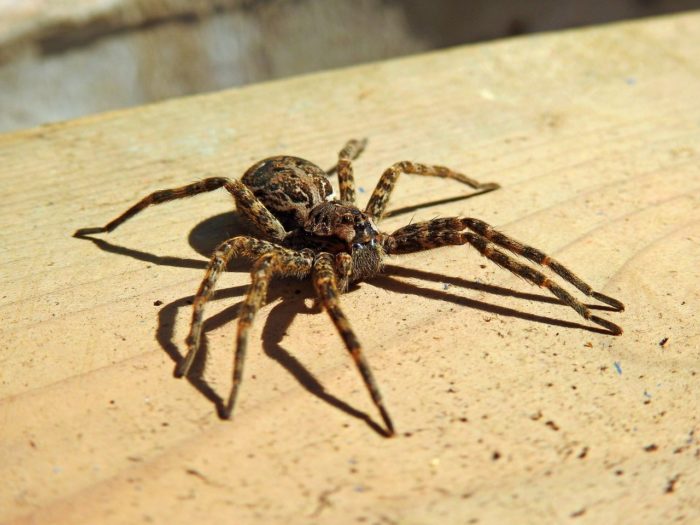
Behavior and Lifestyle: Ant
Ants are highly social insects and exhibit complex behaviors within their colonies. Here are some notable aspects of ant behavior
Social Structure
Ants live in organized colonies with specific roles and division of labor. They have specialized castes such as workers, soldiers, and reproductive ants (queens and males).
Division of Labor
Ant colonies function through the division of labor, where different individuals perform specific tasks. Workers are responsible for foraging, nest building, caring for the young, and defending the colony, while queens focus on reproduction.
Colony Behavior and Teamwork
Ants display remarkable teamwork and cooperation within their colonies. They communicate through chemical signals, or pheromones, to coordinate tasks, defend the nest, and locate food sources.
Adaptability
Ants have the ability to adapt to various environments and can establish colonies in diverse habitats, including underground, in trees, or even in buildings. Some ant species also exhibit migratory behavior.
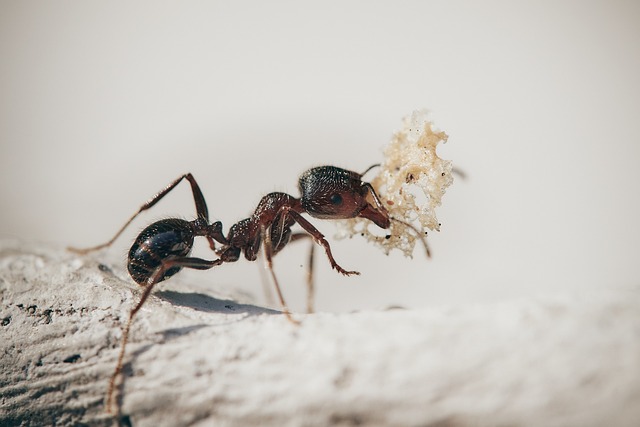
Survival Techniques: Spider
Spiders have evolved a range of survival techniques that enable them to thrive in diverse environments. Here are some notable strategies employed by spiders
Venomous Abilities
Many spider species possess venom that they use to immobilize or kill their prey. Spiders inject venom through their fangs, paralyzing or subduing their victims before consuming them.
Camouflage and Stealth
Spiders employ various camouflage techniques to blend into their surroundings and remain hidden from both predators and prey. Some spiders have body patterns that mimic their surroundings, while others use their web structures to camouflage themselves.
Silk and Web Defense
Spiders utilize their silk not only for building webs but also for defense. When threatened, certain species may create a dense silk barrier or employ swinging movements on their webs to deter potential attackers.
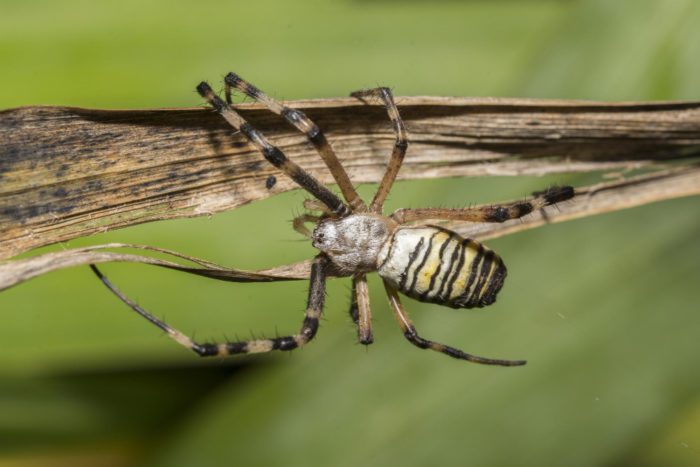
Survival Techniques: Ant
Ants have developed remarkable survival techniques that aid in their survival as social insects. Here are some notable strategies employed by ants
Coordinated Defense
Ants rely on collective defense strategies to protect their colonies. When faced with a threat, worker ants may swarm together and use their mandibles and stingers to ward off attackers, effectively defending their nest.
Foraging and Food Storage
Ants engage in extensive foraging activities to gather food resources. They establish trails to efficiently locate and transport food back to their nests. Some ant species also store food within their colonies for times of scarcity.
Adaptations to Different Environments
Ants have adapted to various ecological niches, including forests, deserts, and urban areas. They possess physical and behavioral traits that allow them to survive and thrive in different habitats, such as specialized body structures, heat tolerance, or the ability to scavenge.
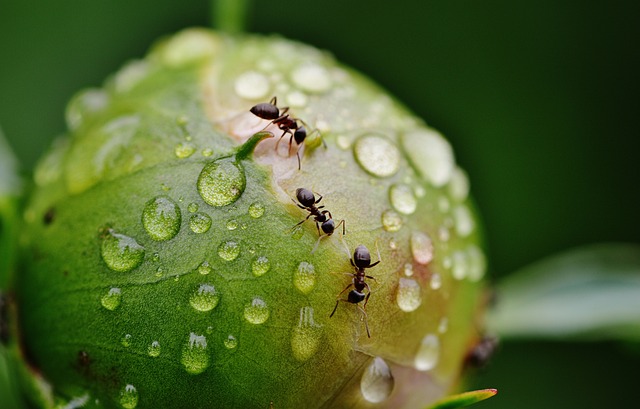
Interactions and Interdependencies
Predatory Interactions
Spider-ant Interactions
Spiders and ants engage in various interactions in nature, often involving predation. While some spider species actively prey on ants, others may opportunistically capture ants that come into contact with their webs or hunting grounds.
Spider Preying on Ants
Spiders employ their venom and hunting techniques to capture and consume ants. They may use their silk to subdue ants caught in their webs, or they may stalk and ambush ants on the ground. Spider species specialized in ant predation may have adaptations that enhance their success in capturing these agile prey.
Ant Defense Strategies
Ants have developed defense mechanisms to protect themselves from spider predation. Some ant species have strong jaws or stingers that they use to fend off spiders. Additionally, ants may release alarm pheromones to alert their nestmates and coordinate a collective defense response against spider threats.
Ecological Importance Spiders and Ants
Impact on Insect Populations
Spiders and ants play crucial roles in regulating insect populations within ecosystems. Spiders play important role in ecosystem as predators and help control the abundance of various insect species, including ants. Meanwhile, ants serve as predators of smaller insects and scavengers, contributing to the decomposition of organic matter.
Nutrient Cycling and Soil Health
Ants are known for their soil engineering activities, which can enhance nutrient cycling and soil fertility. Through their nest-building, foraging, and decomposition of organic matter, ants contribute to the nutrient enrichment of soil and promote the overall health of ecosystems.
Mutualistic Relationships
While spiders and ants may often be depicted as adversaries, there are also instances of mutualistic relationships between them. Some spider species coexist with ants, benefiting from the ants’ defensive abilities that protect the spiders’ nests or provide them with a steady supply of prey.
The interactions between spiders and ants demonstrate the complex dynamics and interdependencies within ecosystems. Their roles as predators and protectors, as well as their influence on insect populations and soil health, contribute to the overall balance and functioning of natural environments.
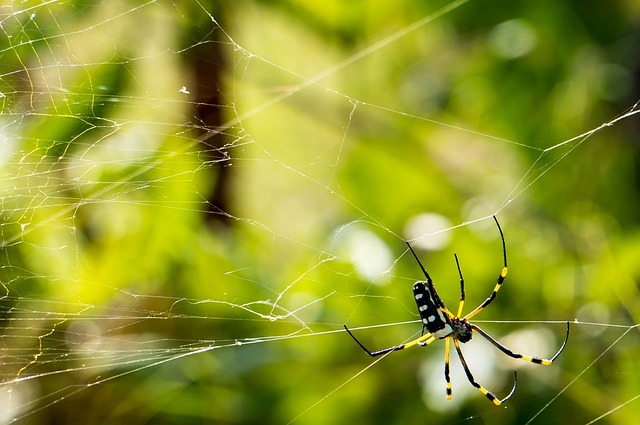
What do spiders have that ants don’t?
Spiders have several unique characteristics and abilities that set them apart from ants. Here are some key features that spiders possess and ants do not:
Web-Spinning Ability
Spiders are renowned for their ability to produce silk and spin intricate webs. They use their silk to construct different types of webs, such as orb webs, funnel webs, or sheet webs, which serve multiple purposes, including capturing prey, sheltering, and mating.
Venomous Fangs
Many spider species possess venomous fangs that they use to subdue their prey. These fangs allow spiders to inject venom, which can immobilize or kill their victims, aiding in the spider’s feeding process.
Multiple Eyes
Most spiders have multiple eyes, typically eight, positioned on their cephalothorax. These compound eyes or simple eyes provide them with a broad field of vision, enabling them to detect movements and perceive their surroundings more effectively.
Spinnerets
Spiders possess specialized structures called spinnerets, located at the posterior end of their abdomen. Spinnerets produce and release silk, which spiders use for various purposes, including constructing webs, creating egg sacs, and performing intricate courtship rituals.
Unique Respiratory System
Spiders have a unique respiratory system that differs from ants. Instead of lungs, spiders have book lungs or trachea, which allow them to extract oxygen directly from the air and transport it to their internal organs.
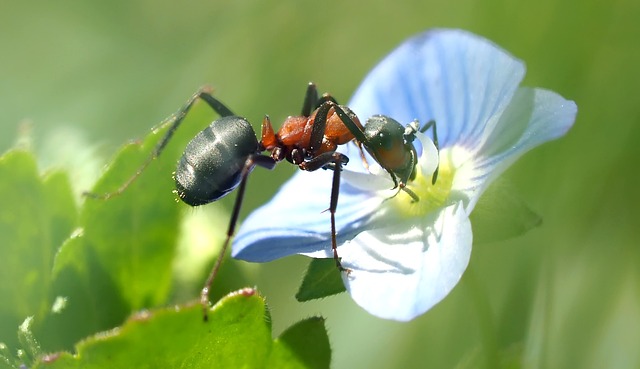
Frequently Asked Questions
Can a spider beat an ant?
In a battle between a spider and an ant, the spider would win because it is a predator with a venomous bite. Although ants may be able to defend themselves in large numbers, a single spider could easily overpower and consume an ant.
Are spiders afraid of ants?
Spiders may not necessarily be afraid of ants, but they do have mechanisms to avoid them. Many ants are known to be lethal to spiders, and some species of spiders have evolved to recognize the scent of ants and avoid areas that are inhabited by them. Additionally, some spiders may avoid surfaces that have been previously walked on by aggressive ants.
Is there a spider that eats ants?
Yes, there are several species of spiders that eat ants. Spiders in the genus Zodarion (Zodariidae family) are known to exclusively prey on ants. Other spider species that commonly eat ants include black widows, lynx spiders, and jumping spiders. However, it’s important to note that not all spiders eat ants, and their diet can vary depending on their species and habitat.
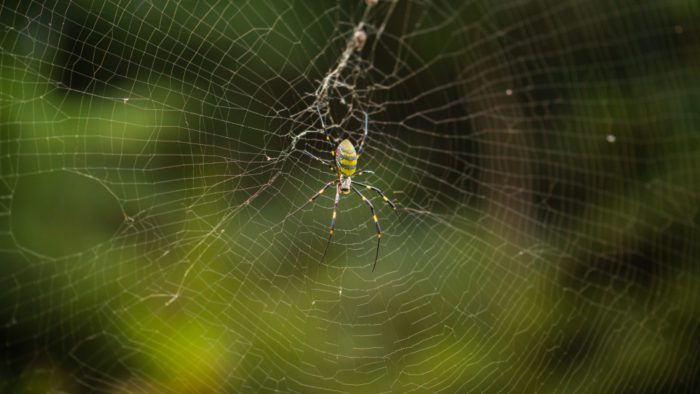
Conclusion
In the intricate world of “Spider vs Ant,” we’ve uncovered a captivating tale of predators and protectors.
The battle between these remarkable creatures highlights the diversity of strategies and behaviors that have evolved in the insect kingdom.
As spiders wield their venomous fangs and intricate webs, ants exhibit collective defense and efficient social systems.
Through their interactions and interdependencies, spiders and ants shape the delicate balance of nature, reminding us of the awe-inspiring intricacies within the smallest of creatures.

